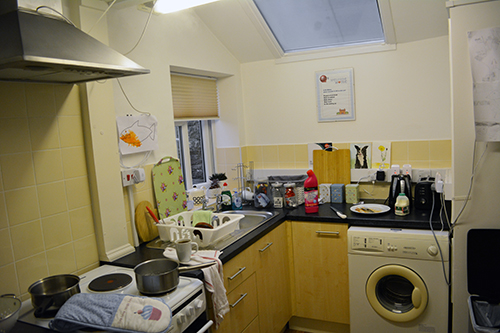Every year in the UK, around 50,000 children are seen in A&E departments with burns and scalds. Up to 70 percent of these children are under three; their injuries are likely to occur at home; these children are also more likely to re-attend A&E with a further injury. At present, health visitors don’t have any guidelines or tools for working with families after their child has had an unintentional injury to help them identify hazards around the home, to prevent further injuries. Professor Alan Emond of the Bristol University Medical School and Dr Toity Deave from the University of the West of England Bristol are using a TRACK award from Elizabeth Blackwell Institute to develop a novel digital tool to help.
Professor Emond says: “Health visitors and other professionals who work with families with young children need an interactive, easy-to-understand, evidence-based, appealing tool to use with parents. We could use this tool to help parents identify potential hazards for themselves, and to continuously improve their environment by reducing hazards. And it would provide opportunities for peer-to-peer support and shared learning.”
Photospheres
The tool that Prof Emond and his team developed takes the form of a photosphere. This uses a feature on many mobile phones which lets you take highly realistic 360-degree panoramic photos - these are extremely immersive. Hi-resolution photorealistic views of a room can be constructed from these images, and Professor Emond and his team overlay further information about injury hazards and home safety messages on top. This technology has been developed by Professor Ben Hicks in the Department of Mechanical Engineering, and has been applied to engineering projects and to the surveying of buildings.
The photosphere tool could potentially be tailored to provide a visualisation of rooms in users’ homes, which would be low cost, applied to any environment, tailored to the individual, largely independent of language, and would allow remote assessment and review.
Augmented reality
Dr Deave explains: “We worked with health visitors and parents to develop a demonstration photosphere for an ‘unsafe’ kitchen, with hazards labelled invisibly. These are located by hovering the cursor over the hazard, or by clicking it. Identifying the hazard like this brings up a positive prevention message, some incidence/epidemiological data and links to resources for further information. A ‘spot the hazard’ game is included, which has been very popular with parents, and a poster can be generated and printed that includes all the hazards in the ‘unsafe’ kitchen.”
Getting to this point, though, required many iterations. The photosphere project was a co-production with parents of young children and health visitors. With their help, the team identified the user requirements of the software, which was then developed by postgraduate students from the Engineering Systems and Design group in Mechanical Engineering. The parents and health visitors also advised how and when it might be used, including individual use when health visitors are advising parents in the home, as well as in health-promotion groups with parents in nurseries and children’s centres.
The study was funded by the TRACK (Translational Acceleration and Knowledge Transfer) award, from the Elizabeth Blackwell Institute. This is designed to help fund initial pilot studies for possible solutions to a health-related problem with commercial potential, although Professor Emond credits the TRACK award with more than just funding.

